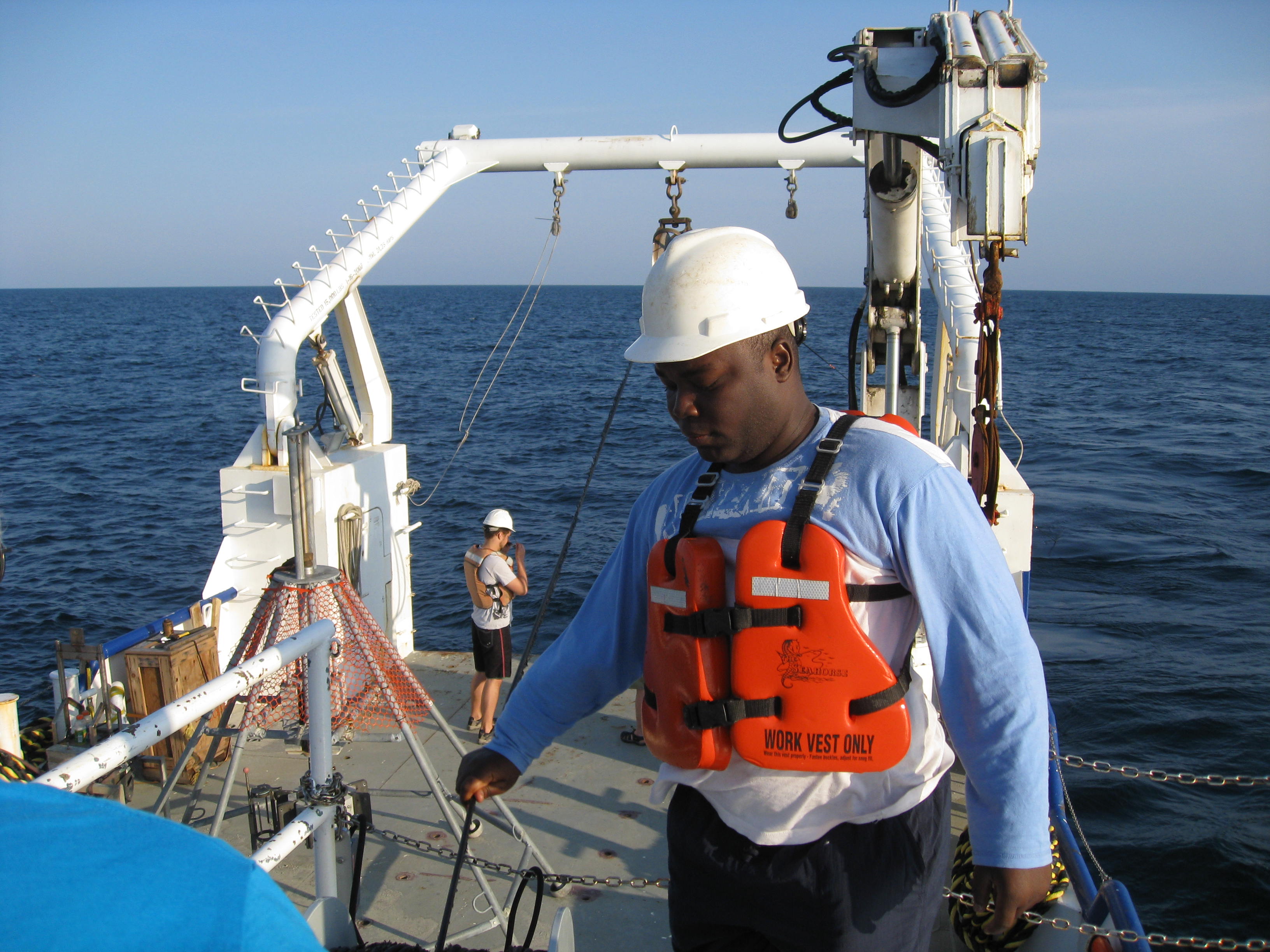News at the HPC²
National Academies of Sciences, Engineering and Medicine awards MSU's Nyadjro an Early-Career Research Fellowship
October 13, 2021
Ebenezer Nyadjro, pictured aboard the research vessel R/V Pelican, studies the twilight and nocturnal migration patterns of marine plankton in the Florida Panhandle Shelf, Gulf of Mexico. Known in the marine science world as vertical migration, marine plankton use this function as strategies for feeding and predator avoidance. Photo submitted/courtesy of Wendy Woods
Awarded in NASEM's Environmental Protection and Stewardship track, Ebenezer Nyadjro's research focuses on reducing microplastics that are finding their way into streams, rivers and oceans. Atmospheric agents, such as waves, abrasion, ultraviolet radiation and photo-oxidation in combination with bacteria degrade plastic fragments into micro and nanosized particles. These prolific contaminants are posing an environmental and economic risk to marine ecosystems, and scientists are finding tiny bits of plastic in the stomachs of fish and shellfish.
"Microplastics research is still in its infancy, and the research world is fortunate to have a researcher like Nyadjro who has the vision, ambition and perseverance needed to conduct this comprehensive research," said Just Cebrian, a coastal ecosystem science researcher and associate director of NGI, an MSU-based NOAA cooperative institute.
Nyadjro explained there are concerns about how these contaminants may affect human health if they move into the muscle tissue humans consume as food. He plans to use remote sensing technology with satellites to identify the microplastics' pollution sources and routes taken as these materials make their way to the Gulf of Mexico. The tiny particles float and eventually sink and settle into the sediment. As future hurricanes hit the Gulf, Nyadjro also will research how the microplastics are stirred back into the water and the effects of this on the marine environment.
"I'm going to work with my MSU geoscience colleagues to take these microplastic samples to the lab and use spectrometry to study the material's absorption and emission of light and other radiation to establish unique identifiers," Nyadjro explained. "Then we plan to use drone software and technology to fly over the Gulf and recognize microplastics by these unique identifiers. If this works, we can transfer that technology to the satellites and view and identify areas contaminated with microplastics from space."
The research team also will use conventional methods of collecting data with boats geared with flow meters and plankton nets of extremely small mesh used to trawl the Gulf to collect samples. That data, along with that from sediment core samples, will be used to run calculations that measure and give approximations of the microplastic-contaminated areas. NOAA supercomputers located at MSU's High Performance Computing Collaboratory also will run calculations to generate models of the microplastics floating and moving in the Gulf's currents.
Cebrian said, "Nyadjro is building a global database with NOAA's National Centers for Environmental Information that provides public access to one of the most significant archives for environmental data in the world. This data will prove to be invaluable to collaborate and work with scientists around the world who are studying how tiny plastic microbeads, fragments and fibers affect marine life and the environment."
After identifying the primary sources and routes of how microplastics make it to the Gulf, as well as collecting additional information on how microplastics affect marine life and the industry, Nyadjro plans to educate the public about certain types of plastic that are the most abundant and problematic. With this information, he hopes the public, industry and government will support and invest in infrastructure to capture and recycle these materials before they reach the water.
To learn more about the Gulf Research Program's Early-Career Research Fellowships, visit nationalacademies.org/our-work/early-career-research-fellowship.
For more information about the Northern Gulf Institute at MSU, visit www.ngi.msstate.edu.
By Diane L. Godwin
